I have a MAX809T which partially works fine, outputting high when voltage is above the threshold after a small 1 second time delay, and outputs low when the voltage is below the threshold. It also has a hysteresis. However, when I connect a load, even a small 70mA microcontroller, the MAX809T actively pulls its output low, waits the 1 second time delay, then pulls it back up.
The battery voltage is 3.99V, and it doesn't change (to 0.01V resolution of my multimeter), and the MAX809T threshold is 3.08V.
I don't believe a small microcontroller can draw a large enough start-up current to drop a large LiPo cell down 1V, but even so I tried adding an electrolytic 10uF capacitor but it doesn't change this unexpected behaviour.
I even tried adding a pull-up resistor to pull the output high, but the MAX809T is actively pulling it low so this doesn't work.
I don't have any external circuitry connected to the MAX809T, just VCC and GND connected, with a multimeter measuring between RESET and GND.
